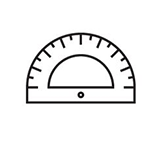둥가리프테루스(Dsungaripterus)
| 국내/해외배송 | |
|---|---|
| 배송비 방법 | 택배 |
| 배송비 | 4,000원 (50,000원 이상 구매 시 무료) |
| 수량 |
|
| 상품 정보 | 가격 | 삭제 |
|---|---|---|
| [총 상품금액(수량)] 0 (0개) | ||
- 일반명 : 익룡(둥가리프테루스)
- 학명 Scientific Name : Dsungaripterus weii
- 형태 Mode : 골격화석 Skeleton
- 시대 Age : 전기 백악기 Early Cretaceous
- 크기 L×W×H (m) : 3.05m×1.23m×3m
- 원산지 Location : 중국 신장 Xinjiang
DSUNGARIPTERUS
ANATOMY
Dsungaripterus was a pterosaur with 10 feet (3 m) wide leathery wings. It had an unusual bony crest running along its snout and had long, narrow, curved jaws with a pointed tip. The crest may have acted as a rudder when flying or may have been a sexual characteristic. It had flat teeth at the back of the jaws, probably for crushing the shells of its prey. It was not a dinosaur, but a type of extinct, flying reptile.
They were lightly built with hollow bones, long, curved necks, long skulls, and small bodies. They had large brains and good eyesight.
Dsungaripterus wings were covered by a leathery membrane. This thin but tough membrane stretched between its body, the top of its legs and its elongated fourth fingers, forming the structure of the wing. Claws protruded from the other fingers.
CLASSIFICATION
Dsungaripterus was a pterodactyloid; it was a reptile, but not a dinosaur. By definition, all dinosaurs were diapsid reptiles with an upright stance. Pterosaurs probably had a semi-upright stance. There is a small minority of paleontologists who think that the pterosaurs' stance could have been upright and that pterosaurs should therefore be included in the clade of dinosaurs (being derived theropods). Either way, dinosaurs and pterosaurs are certainly closely related.
Pterodactyloids were:
-vertebrates
-tetrapods
-Diapsids - these include all the reptiles (except turtles) and birds. They are distinguished by having two holes in the rear upper part of their skulls and two holes behind the eyes.
-Archosaurs - this group includes dinosaurs, crocodilians, pterosaurs, birds, etc.
-Pterosauria - flying reptiles. There are two type of pterosaurs:
Rhamphorhynchoids ("prow beaks") - early pterosaurs that appeared during the Triassic period and went extinct at the end of the Jurassic period, that had long tails, short necks, and long, narrow wings. These were the first flying vertebrates. Examples include Dimorphodon, Rhamphorhynchus, and Sordes.
Pterodactyloids ("wing finger") - their descendants that appeared late in the Jurassic and died in the K-T extinction, 65 million years ago, that had shorter tails. Examples include Pterodactylus, Dsungaripterus, Pteranodon, and Quetzalcoatlus.
WHEN DSUNGARIPTERUS LIVED
Dsungaripterus lived during the early Cretaceous period.
The birds evolved during the Jurassic period and were probably competition for the pterodactyloids, including Dsungaripterus.
DIET
Dsungaripterus was a carnivore It probably ate fish (which it caught at the surface of the oceans), mollusks, crabs, perhaps plankton (for some species), insects, and scavenged dead animals on land.
LOCOMOTION
Dsungaripterus probably flew long distances using large, light-weight wings.
DISCOVERY OF FOSSILS
Dsungaripterus fossils have been found in
PTERODACTYLOID ACTIVITIES
Pterosaurs from the UCMP, Berkeley.
Quetzalcoatlus information sheet from Enchanted Learning.
Pteranodon information sheet from Enchanted Learning.
Quetzalcoatlus, the giant pterosaur, at the

















 확대보기 및 상세정보
확대보기 및 상세정보